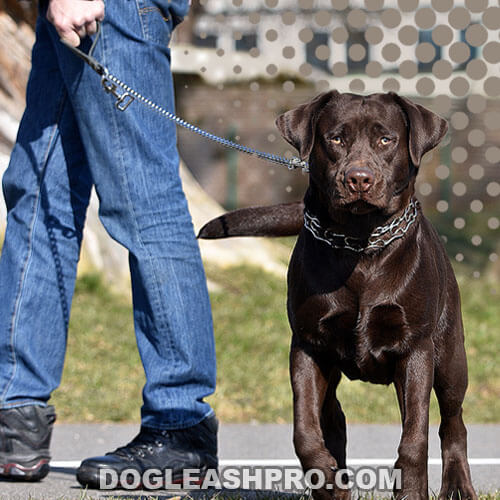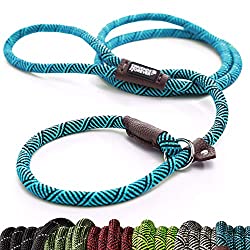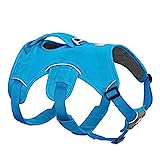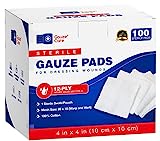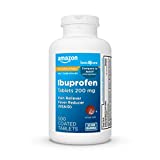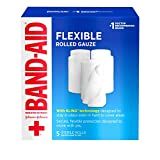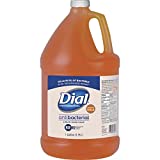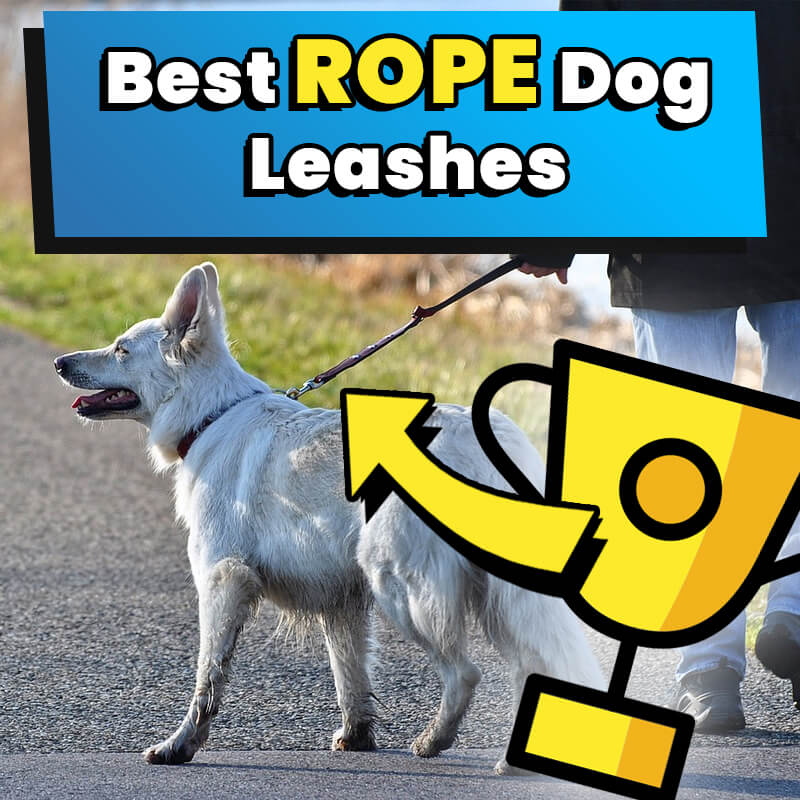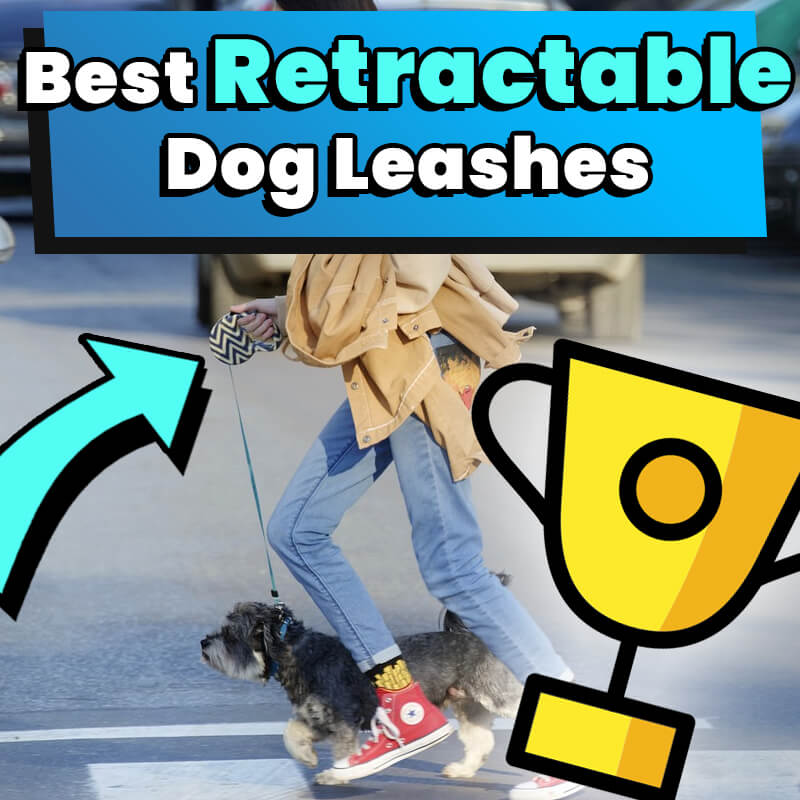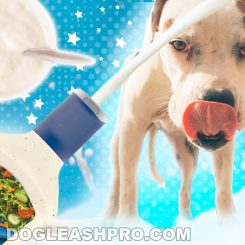
What to put on rope burn from dog leash? You can treat a rope burn from a dog leash by cleaning the affected area with cool water. Doing so will help remove debris and other contaminants in and around the wound. Next, gently pat dry the area with a soft cloth, apply an antibiotic ointment, and cover the injury with a sterile bandage.
Rope burns occur when a coarse material consistently rubs against the skin. These friction burns are only too common in dog parents, thanks to leashes. If you’re scouring the internet to look for remedies for rope burns, we can help.
This article will walk you through why rope burns occur and how to treat them. There’s also a handy section on home remedies for rope burns for your consideration. Be sure to check out our Best Rope Dog Leashes guide to find comfortable rope leash that doesn’t cause rope burn.
Table of Contents
What is a Rope Burn?
Rope burn (aka Leash Burn) is a type of friction burn that occurs when a rough material rubs against the skin, causing injury.
If the injury is minor, it can be treated relatively easily, but if left untreated, it can lead to infections and complications.
Rope burn symptoms include pain, redness, and swelling. In severe cases, the skin can blister and start peeling.
Can you get Rope Burn From Dog Leash?
Dog owners often use a leash to walk their furry friends. While leashes are sturdy and durable, the question arises whether they can cause rope burn.
The answer is yes, if you’re not holding the rope leash correctly.
Rope burn can occur from a dog leash, especially if the leash is made of rough material or has a rough texture.
When the leash rubs against the skin, it can cause friction, leading to rope burn.
The risk of rope burn increases when the leash is pulled sharply or when the dog jumps or runs suddenly.
Rope burn can be painful and uncomfortable, and it can take a while to heal, so it’s essential to take precautions to prevent it from happening.
As to what kind of leashes are prone to causing rope burns, most canine parents warn against retractable leashes, especially if you’re not used to it.
A retractable dog leash can extend and retract, allowing the dog to roam further away from the owner than a traditional leash would allow.
Retractable leashes typically consist of a thin cord or tape that can be extended and retracted from a plastic handle.
While these leashes offer more freedom for the dog, they also pose safety risks.
For example, if the handler isn’t careful and gets tangled up in a retractable leash or tries to grab to keep their K9 friends in check, it can lead to burns, cuts, and in serious cases, finger amputations.
Rope Burn from retractable leash can sometimes be particularly nasty to treat. Retractable leashes can also injure your pet’s neck, so it’s important to know how to use them correctly.
DON’T MISS: 17 Tips for First Time Dog Owners
5 Reasons you’re getting Rope Burn From Dog Leash
Speaking from personal experience, a Rope Burn From Dog Leash can be a painful injury.
If you keep getting rope burns from handling your fur baby’s leash, you can prevent future damage by going through some of the common reasons I’ve compiled below.
Wrong leash type
The type of leash you’re using could be causing the rope burn.
Leashes made of coarse material can cause friction when your dog pulls, resulting in rope burn. Consider switching to a flat or rolled leather leash or a leash made of soft nylon.
Incorrect handling
Once upon a time, I’d wrap the leash around my hand to keep my canine from running off. Bad idea!
Holding the leash too tightly or wrapping it around your hand are prime culprits of rope burn.
Avoid wrapping the leash around your hand or wrist, and keep a relaxed grip on the leash instead.
Dog pulling too hard
Most folks don’t account for their fur baby’s muscle power when it comes to rope burns. The bigger the canine, the more powerful he will be.
RECOMMENDED: German Shepherd Great Pyrenees Mix (Complete Guide)
That means if your pet pulls on the leash suddenly or consistently, you’ll end up with a rope burn.
Try opting for a harness to keep you and your pet safe from rope burns and give you better control over your dog’s movements.
RELATED: What Are The Different Types of Dog Harnesses?
Short leash
If your leash is too short, you’ll probably feel every little pull, even when your pet isn’t trying to break free.
A longer leash will give your pet breathing space and protect your hands from friction burns.
Not enough lubrication
If your leash is dry, it can cause rope burn. Consider using a lubricant such as petroleum jelly or a fabric conditioner to reduce friction and prevent rope burn.
Various degree of Rope Burn From Dog Leash
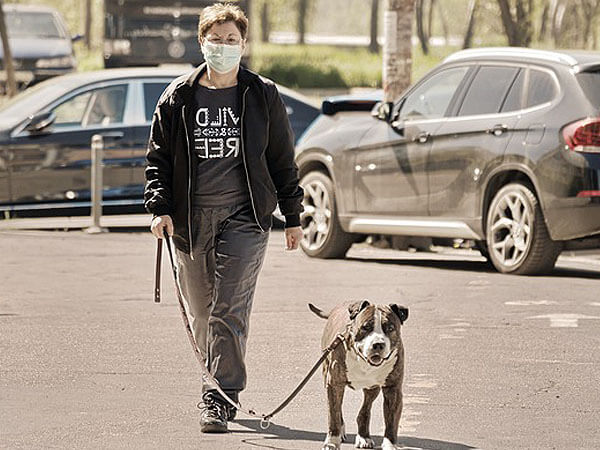
If you’re new to pet parenting, you might not know about the different degrees of Rope Burn From Dog Leash(es).
Since rope burns result from friction and heat, they’re classed into three categories:
First, second, and third-degree burns.
First-degree rope burns are superficial and pretty easy to treat at home.
Second and third-degree are the more Severe Rope Burn categories.
Not only do they include Bad Rope Burns, but also infections are involved.
Severe Rope Burn Treatment typically requires a visit to your doctor or the ER for relief.
Here’s how the injuries of dog leash rope burns differ in degrees.
You may also like: What Is The D-Ring On A Dog Leash For?
First-Degree Rope Burn Treatment
First-degree rope burn is the mildest form of rope burn. It affects the top layer of the skin, causing redness, pain, and slight swelling.
The affected area may feel tender or itchy, but it usually heals within a few days without any scarring.
It is important to note that even though first-degree rope burn is the mildest form of rope burn, it can still be pretty painful.
Treatment typically involves cleaning the affected area under cool water with antibacterial soap, gently drying the injury, and applying an antibiotic topical cream (like Neosporin) to prevent infections.
Second-Degree Rope Burn Treatment
Second-degree rope burn is more severe than the first. It affects deeper layers of the skin, causing blisters, intense pain, and swelling. The injured area can appear red and may ooze fluid.
This type of burn can take several weeks to heal and may leave a scar. If left untreated, second-degree rope burn can lead to an infection, which can be dangerous.
If you have a second-degree rope burn, seeking medical attention as soon as possible is essential.
Treating second-degree rope burn involves cleaning the affected area and applying a sterile dressing to prevent infection.
In some cases, your doctor can give you antibiotics to prevent infection.
If there’s an intact blister, your doctor may leave it alone to heal. However, if the blister is large or causes significant pain, the doctor can drain it to relieve pressure and speed up healing.
After draining the blister, your doctor will apply a sterile dressing (sterile gauze pads or strips from a gauze roll) to the affected area.
You may also be prescribed Ibuprofen to relieve the pain associated with a second-degree rope burn.
Third-Degree Rope Burn Treatment
Third-degree rope burn is the most severe form. It affects all layers of the skin and can even damage the underlying tissue. The affected area may appear black, white, or bright red.
Third-degree rope burn requires medical attention as it can cause severe damage to all the layers of the skin and immediately underlying tissue. It can take months to heal and often leaves a visible scar.
Treatment for such burns can involve cleaning and bandaging, as in the case of second-degree burns, or surgery to remove dead tissue.
The latter only applies in severe situations and is done to promote healing.
If the burn covers a large area, your doctor can recommend physical therapy to help regain strength and mobility.
How to tell if you have an Infected Rope Burn?
An open wound is susceptible to infection. That’s why experts advise care even when dealing with a first-degree infected Rope Burn.
However, because second and third-degree burns involve damage to the middle layers of skin and underlying tissue, they’re even more prone to complications.
Generally, the first sign of Rope burn infection is redness and swelling beyond the initial injury site.
Other signs of infection can include the following:
- The damaged area may feel warm to the touch
- Pus or other discharge coming from the wound.
- Fever, chills, and other flu-like symptoms if the infection becomes severe
The best way to prevent a rope burn from becoming infected is to keep the wound clean and covered until it has completely healed.
Avoid touching the wound with dirty hands or exposing it to dirty surfaces. If the Rope Burn infected is on your hand(s), try and keep the area dry and prevent the dressing from getting wet.
Why Is My Rope Burn White?
If your rope burn is white, you’re likely experiencing a full-thickness or third-degree burn.
This type of burn can turn the affected skin red, yellow, white, or black. And that’s why getting medical assistance as soon as possible is vital.
Treating these burns at home is not advisable at all. Full-thickness burns involve damage to the epidermis, the following layers of skin, and the tissue underneath.
Another sign of a third-degree burn is the absence of pain because the nerves and been damaged due to the injury.
How To Get Rid Of Rope Burn?
The treatment of rope burns depends on their severity. For example, a superficial or first-degree rope burn should be cleaned with cool water to remove debris and other pollutants.
Don’t be tempted to use ice on the wound, as this can worsen the damage.
Next, apply a layer of antibiotic cream on the affected area and cover it with a strip of gauze to keep it safe from contaminants and promote healing.
The best thing for Rope Burn pain is using cold compresses to relieve the burn or having over-the-counter pain medication to control your discomfort.
What Helps Rope Burn?

The best way to help a rope burn injury is to keep the affected area clean, covered, and dry.
It’s also wise to keep the burn from exposure to direct sunlight and other heat sources to ensure no further damage occurs.
Dog owners suffering from rope burn should take plenty of rest the first few days after the injury occurs to prevent aggravating the damage.
Keep a wary eye out whenever you’re redressing the burn to see if there’s any discharge or oozing. If you notice the wound getting dry after two to three days, it’s on its way to healing.
How To Treat Rope Burn From Dog Leash?
We’ve already mentioned second and third-degree rope burns require immediate medical assistance, but it bears repeating.
If you notice a blister or white, yellow, or black skin around the burn area, you’re likely not suffering from a superficial burn. As such, it’s imperative to contact your doctor for treatment.
Treating severe rope burns at home can lead to more damage. Since the danger of infections is much greater with these types of burns, you risk your health and interfere with healing if you don’t seek medical assistance.
Going to a doctor can help you heal faster because they’ll help you clean and dress the wound appropriately. They’ll also provide you with antibiotic medication to help prevent infections and give you pointers on caring for the injury.
Severe burns sometimes require surgery to remove infected tissue to promote faster reparation to skin, nerves, and tissue.
Putting off going to the doctor can increase the risk of the infection spreading and lead to serious complications.
Rope Burn Treatment: Here’s what to do for Dog Leash Rope Burn
Are you curious about Rope Burn treatment and how it can differ for various parts of the body?
If yes, this section might interest you. Scroll below to understand how to tackle a Dog Leash Rope Burn, depending on the location of the injury.
How To Treat Rope Burn On Hands?
If you’re dealing with a rope burn on your hands, our treatment for Rope Burns on hands is what you need.
Moreover, the Rope Burn hand treatment treatment process is straightforward and uses items you likely already have in your house.
Here’s how:
Step One – Cleaning
Before treating the injury, cleaning it free of contaminants is essential.
So, the first step of the Rope Burn on hand treatment requires cleaning the injury under running water (cool) and using antibacterial soap.
Be extremely gentle while washing the wound to avoid damaging the skin further.
Once you’ve washed the skin, hold it under cold water for another five to ten minutes. This will help the skin cool down and prevent inflammation.
Step Two – Applying the ointment
Step two of the Rope Burn on hands treatment involves applying an antibiotic (topical) ointment over the affected area.
Remember to wipe your hand with sanitizing hand wipes to ensure they’re germs-free before touching the injury.
Spread enough ointment on the wound to cover its entirety with a moderate layer of the cream. This will help protect the exposed skin from airborne and other pollutants.
Step Three – Cover with a bandage
Rope burns shouldn’t be left uncovered due to fear of infections. And exposing a wound on your hand can lead to further damage if you accidentally rub your hand against something.
For these reasons, it’s best to cover the affected area with a thin strip of sterile gauze and tape with four short pieces of surgical tape to keep the gauze in place.
Step Four – Cold compress
If your wound continues to throb and burn after you’ve applied the dressing, you can opt to apply a cold compress over the area for five to ten minutes.
However, remember to wrap the compress in an absorbent cloth to keep the condensation from wetting your gauze dressing.
How To Treat A Rope Burn Blister?
Rope burns are okay, but what about rope burn blisters? How does treatment differ from one to the other?
If you’ve been wondering the same, take a moment to go through our step-by-step Rope Burn blister treatment manual below.
1. Clean the affected area
Begin by cleaning the blister and the surrounding area with soap and water. Pat it dry gently with a soft cloth or towel.
2. Leave the blister be
Do not be tempted to pop the blister, as this can increase infection risk and slow healing.
3. Use aloe gel
Applying aloe vera gel to the blister or the injured area can help combat inflammation, relieve itching or burning, and help boost healing.
4. Apply sterile dressing
Cover the blister with a sterile dressing to prevent further irritation and infection.
5. Elevate the area
If the blister is on your arm or leg, elevate it to reduce swelling and pain.
6. Take painkillers
Over-the-counter (OTC) painkillers such as acetaminophen or ibuprofen can help lessen pain and inflammation.
7. Keep the area dry
Avoid getting the blister wet, as this can increase the risk of infection.
8. Monitor the blister
Keep an eye on the blister to make sure it’s healing properly. If it becomes red, swollen, or starts to ooze pus, seek medical attention.
So, what’s good for Rope Burns On Hands?

What’s good for Rope Burns on Hands? The best way to treat Rope dog Leash Burn on hand is to stick to the tried and true methods.
So, for example, the best Leash Burn on Hard or Rope Burn ointment is Neosporin.
Other viable options include Polysporin and Bacitracin.
Conversely, Rope Burn pain treatment(s) include OTC painkillers, cold compresses, and aloe vera gel.
How To Soothe Rope Burn on hand?
How To Soothe Rope Burn on hand is a pretty common query among dog owners. If you’ve been asking the same, you might want to pay attention here.
Before we get to acceptable remedies for soothing a rope burn, let’s talk about what you shouldn’t be using on rope burns.
Plenty of households rely on natural ingredients like honey, egg whites, or butter to help alleviate the pain of a burn.
However, rope burns tend to remove or break the skin barrier, which means using these unsterile items can introduce germs and promote infections.
Experts also advise against using things like toothpaste, ice, and steroid creams on rope burns. Far from healing, these items can actually bring about further damage and should be avoided.
Now that you know what to avoid on rope burns on hands, let’s focus on what dog parents can use to alleviate the pain and itching of rope burns.
First, using antibiotics creams to cover the wound before dressing it in sterile gauze is a MUST! There’s no overlooking this step.
Second, you can use store-bought aloe gel and a cool compress on the affected area to help keep the discomfort at bay.
Here’s the thing, though.
It’s best to apply the aloe gel before you apply the antibiotic cream and use a cold compress after you’ve covered the wound in gauze.
How To Treat Rope Burn On Fingers?
You can treat rope burns on fingers much the same way you treat hand burns.
The first step is cleaning the injury under cool running water. You can use antibacterial soap to wash the wound gently.
Once you’re done with that, pat the wound dry with a soft, clean cloth and apply some antibiotic cream.
Finally, cover the injury with a strip of sterile gauze, and you’re good to go.
Since you’re dealing with a burn on your fingers, rest the affected hand for a few days and try to keep the hand elevated for short periods. Doing so will help boost healing.
How To Treat Rope Burn On Leg?
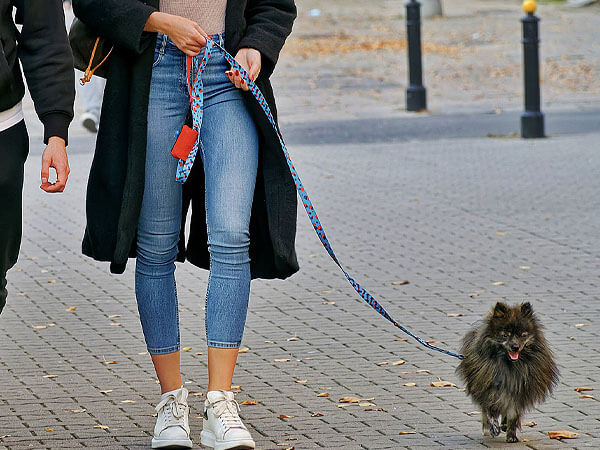
As painful as Rope Burn on leg(s) are, they’re actually much easier to treat than rope burns on hands or fingers.
Why?
Because you don’t use your legs the same way as your hands. Therefore, allowing your legs to rest and heal becomes easier.
However, that doesn’t mean you should take a dog leash burn on leg(s) lightly.
Rope Burn on leg treatment doesn’t differ much from what we’ve already described. You’ll need to clean the wound, apply the antibiotic cream, and cover it with a sterile gauze dressing.
Besides that, treating rope burn on leg(s) can also involve OTC pain meds and cold compresses.
How To Treat Rope Burn On Ankle?
Rope burns can be pretty painful and uncomfortable, especially when they occur around the ankle area.
Here are some easy steps to help treat rope burns on your ankle:
- Clean the affected area with cool water and mild soap
- Apply a layer of antibiotic ointment
- Cover the wound with a strip of sterile gauze
- Elevate the affected leg to reduce swelling
- Take pain relievers as needed
Remember to seek medical attention if the wound becomes infected or the pain persists.
How to Treat Rope Burn On Neck?
Curious about Rope Burn on neck(s)? To treat rope burns on the neck, begin by cleaning the affected area with soap and water.
Apply an antibiotic ointment and cover the wound with a sterile dressing.
Keep the site clean and dry, and avoid any activities that may irritate the wound.
Seek medical attention if you suspect the burn is severe or shows signs of infection like the discharge of pus.
How do you treat Nylon Rope Burn?
A nylon Rope Burn isn’t unique in the world of friction burns and is treated the same way as all rope burns are.
That means nylon Rope Burn treatment involves the same wash, clean, and cover approach we’ve discussed for hand burns right at the beginning.
So, What Is The Best Treatment For A Rope Burn?
Experts will tell you the treatment of a rope burn will vary depending on the burn intensity.
But, the best treatment for a first-degree or superficial rope burn is cleaning the wound under room temperature or cool running water with antibacterial soap.
Next comes patting the wound dry, applying the antibiotic cream of choice, and covering the injury with a stripe of gauze (sterile).
If you’re dealing with rope burn blisters, you’ll follow the same process, except it’s best to avoid popping the blister and use aloe gel on the injury instead of antibiotic cream.
If the blister drains naturally, use antibiotic cream when you dress the injury to keep infections at bay.
How Long Does Rope Burn Last Without Treatment?
Have your been wondering, “How long does Rope Burn last without treatment?”
Rope burns can last for several weeks without treatment, depending on the intensity of the injury.
Mild burns typically mend within a few days, while more severe burns may take weeks or months to heal fully.
It is essential to seek medical aid for severe rope burns to prevent infection and promote recovery.
How to prevent Dog Leash Burn
We’ve covered the A to Z of treating rope burns, but what about preventing a Dog Leash Burn?
If you’ve been waiting for helpful prevention tips, this section is for you.
Scroll below to discover valuable pro tips aimed at helping you avoid leash burns in the future.
Choose the Right Leash
Select a leash that is comfortable to hold and made of a soft, durable material. Avoid thin, rough leashes that can easily cause friction burns.
Wear Gloves
Wearing gloves can protect your hands from leash burns. Choose gloves made of a breathable material to prevent your hands from getting too sweaty.
Use a Padded Leash
Padded leashes are designed to provide handles with extra cushioning for your hands. They are handy if your dog pulls or jerks on the leash.
Train Your Dog
Properly training your fur baby to walk on a leash can prevent them from pulling or jerking, which can cause leash burn. This is a long-term goal, but worth the end result.
You may be interested in: Leash Training (What Age To Start Leash Training A Puppy?)
Use a Harness
Using a (no-pull) harness instead of a collar can help distribute the pressure of the leash more evenly across your dog’s body, reducing the risk of pulling and leash burns.
READ ALSO: Collar Vs. Harness (Which Is Better?)
Take Breaks
If you’re going on a long walk, take breaks to give your hands and your pet a rest. You can switch hands periodically to prevent one hand from getting too sore.
Use Moisturizer
Regularly moisturizing your hands can help prevent dryness and cracking, which can make rope burn worse.
Avoid Extreme Temperatures
Walking your dog in extreme heat or cold can make your skin susceptible to leash burn. Opt to walk your canine during the cooler times of the day.
Pick The Right Spot
If you’re in the process of training your dog leash etiquette, avoid crowded areas with distractions. Instead, pick a spot with plenty of open space and less traffic so that there’s nothing to tempt your canine to make a run for it.
Wear Long Pants
Avoid wearing shorts or sandals if your fur baby is a devoted puller. If you get tangled in the rope, this leaves the skin exposed and prone to bad rope burns.
How to heal a Rope Burn fast?
The easiest way to heal a rope burn fast is to keep the injury clean and covered. After you’ve washed and applied antibiotic cream, you’ll need to change the dressing regularly to prevent infection.
Besides that, keep the injured area elevated and rest for a few days to boost recovery.
How To Heal Rope Burn
Rope Burn healing involves keeping the injured site clean and dry. You can use aloe gel (for blisters) or antibiotic ointments for healing Rope Burn(s).
Finally, covering the wound with a strip of sterile gauze and regularly changing the dressing helps.
How Long Does Rope Burn Take To Heal?
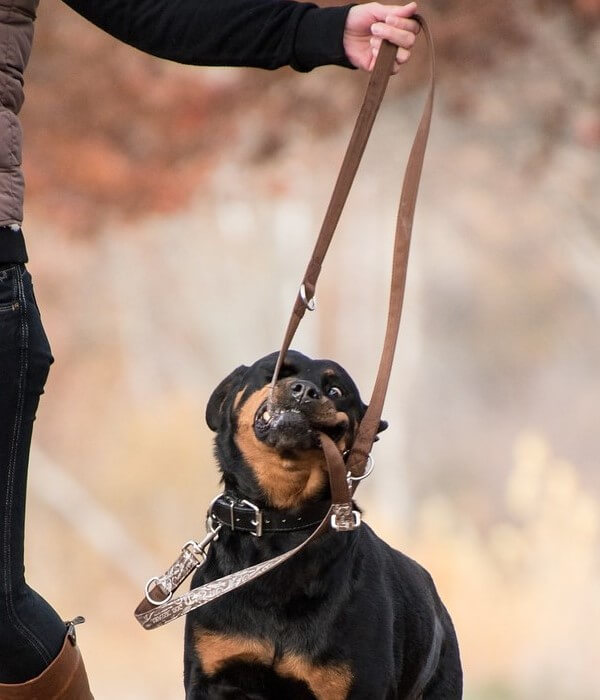
Rope burns can take anywhere from six days to several weeks to heal completely.
However, this depends on the severity of the injury and the absence of complications like infections.
READ NEXT: How To Stop Your Dog From Biting the Leash While Walking
What are some Home Remedies For Rope Burn?
Interested in Home Remedies For Rope Burn? Here’s the thing, though. Rope burns aren’t the kind of injury you want to test unresearched home remedies on.
Any remedy for Rope Burn must be tried and tested because rope burns can include infections and second and third-degree burns.
If you’re wondering what to do for a Rope Burn, listening to your healthcare provider’s advice is the best course of action.
Moreover, if you’re treating a superficial rope burn at home, the best remedy for rope burn centers around aloe gel. Not the kind you make at home because that may be unsterile.
Besides that, avoid any natural Rope Burn remedies your friends and well-wishers recommend until you’ve gotten a go-ahead from your doctor.
Can you put Vaseline On Rope Burn From Dog Leash?
Generally, Vaseline on Rope Burn(s) is only recommended when trying to keep a superficial blister free of contaminants. Once a blister pops or drains, experts recommend using antibiotic cream to keep the injury safe from contaminants.
Can you put Aloe Vera For Rope Burn From Dog Leash?
Yes, you can use Aloe Vera For Rope Burn. However, it’s best to ensure the aloe gel you’re using is from a reputable brand and doesn’t include other ingredients for skin treatment that might interfere with your injury.
How Long Does A Friction Burn From Dog Leash Take To Heal?
How long a Friction Burn From Dog Leash takes to heal depends on the severity of the burn. Rope friction Burn(s) can range from mild to full thickness, with the latter taking medical aid and several weeks to heal completely.
Should you cover a friction burn or let it breathe?
Until the friction burn contains broken skin, it’s best to keep it covered to avoid infections. Once the skin starts to heal, you can allow it to breathe for 20 minutes between dressing changes.
Best Way To Treat Rope Burn (Final thoughts)
We’re at the end of our Best Way To Treat Rope Burn guide and hope our readers have a better idea of how to deal with such an injury in case it occurs in the future.
Just ensure you take a quick trip to your doctor’s office if you suspect your burn is more than just a superficial one. Remember, precaution is always better than cure.
Related Questions
The best dressing for rope burn is a sterile gauze bandage.
Yes, Neosporin is recommended to treat first-degree rope burns.
DISCLAIMER: THIS WEBSITE DOES NOT PROVIDE MEDICAL ADVICE
The information, including but not limited to, text, graphics, images and other material contained on this website are for informational purposes only. No material on this site is intended to be a substitute for professional veterinary advice, diagnosis, or treatment. Always seek the advice of your veterinarian or other qualified health care provider with any questions you may have regarding a medical condition.

With over five years of specialized experience as an animal writer, my expertise lies in dog nutrition, health, behavior, grooming, and training. I am dedicated to delivering helpful and informative content that caters to the well-being of our furry friends. My primary goal is to empower pet owners with knowledge and ensure our canine companions thrive in health and happiness. In my free time, I love volunteering at local dog rescue centers.
